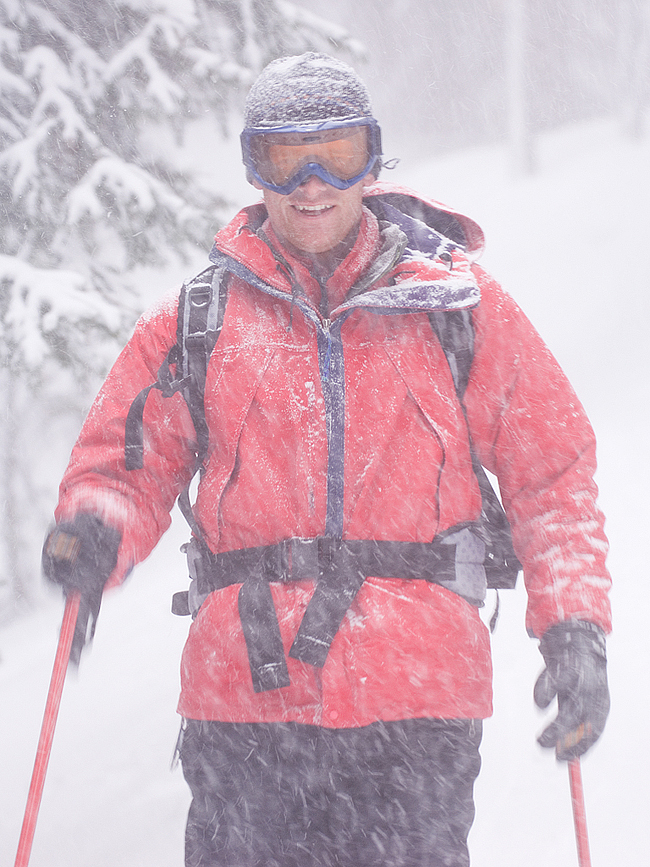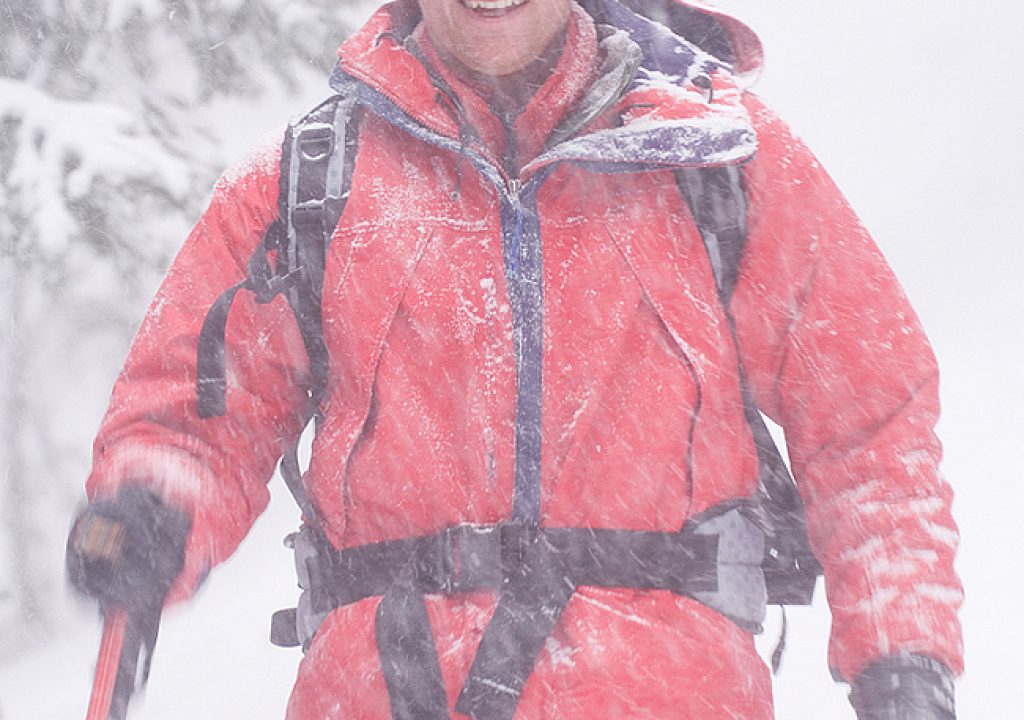
I was recently shooting skiers, and as often happens, the weather got nasty. No splitter skies this time, but instead horizontal snow. Sometimes blowing snow can create really interesting images, the trick is just trying to shoot during the snowstorm. I had a lot of practice shooting in blowing snow living in Alaska, here are a few ideas that might make your snow shoot go better.
1. Cold is good. Yes, cold, really cold, is a good thing. Why? Because shooting in snow during extreme cold means the snow is dry, not wet. You can blow snow flakes right off your camera. It gets more difficult when the snow is wet, and melts the second it hits your camera. This is more like shooting in the rain.
2. Use your lens hood. A lens hood will protect the front element of your lens from blowing snow. You don't want flakes hitting the front glass, melting and causing droplets on your glass.
3. Put on a rain cover. If it is really nasty, consider putting a rain cover on your camer/lens. Pro level cameras can take a lot of moisture and abuse, but if you are shooting a ski race for hours in the falling snow, better to keep your camera as dry as you can. They are not waterproof.
4. Turn off autofocus. Depending on how hard the snow is falling, autofocus can go wild trying to focus in falling snow. Every little flake confuses the lens as to what the subject really is. If this happens, try using manual focus if you can with your subject.
5. Bring a small umbrella. If I know I am going to be working in the snow, I will pack a small travel umbrella. I can pop this open when I need to change lenses or flash cards. I have someone hold the umbrella or I attach it to a tripod with a clamp (you will need to get low to get under it).
6. Set up a tent. On winter shoots where I know I will be working in the falling snow, I set up a tent to use. I will get inside the tent, set up to shoot, and make sure the door is aimed at where my models are skiing/snowshoeing past. I can shoot from inside the tent out the door and never have an ounce of snow hit me.
7. Close your tripod legs. Make sure your tripod legs have space to go a little wider as they go into the snow. Plunging your tripod into hard-packed snow with the legs as wide as they go can result in a leg section being bent or even broken. I often plunge mine in the snow with the legs close together, just a little wider than a monopod. I've seen numerous bent tripod legs (which won't retract) because of being bent in firm snow.
7. Rewarm slowly. When you do return inside from the cold, let your camera gear rewarm slowly to avoid moisture buildup in your lens or camera. I normally put my camera gear in my pack outside, zip it up tight, and bring this inside. I let my camera bag thaw out for a few hours before I open it up to clean my gear; a great time to go have dinner and check on it later.
The next time the snow flies, don't put your camera away. Go out and shoot, you might be surprised at what images you create.

